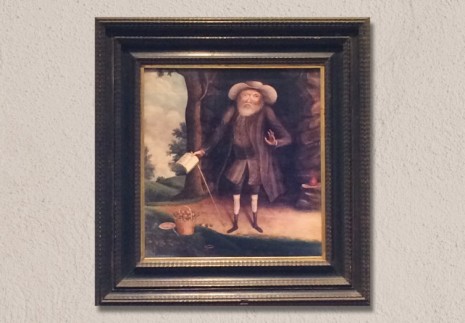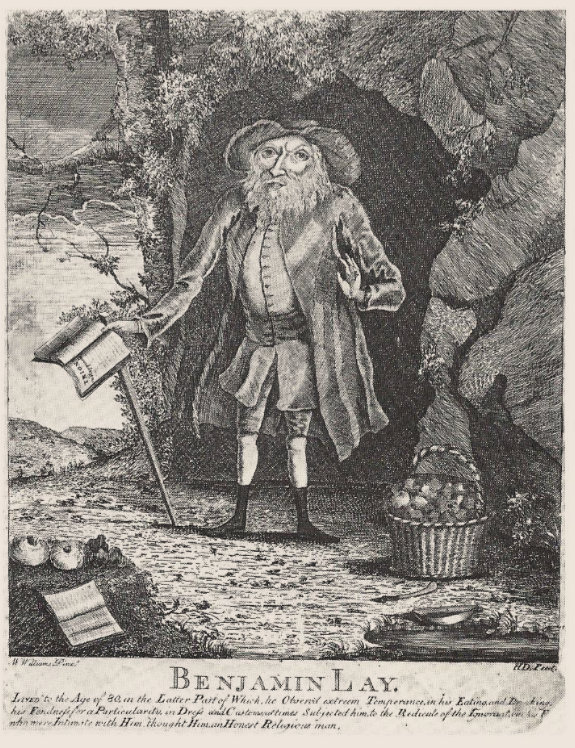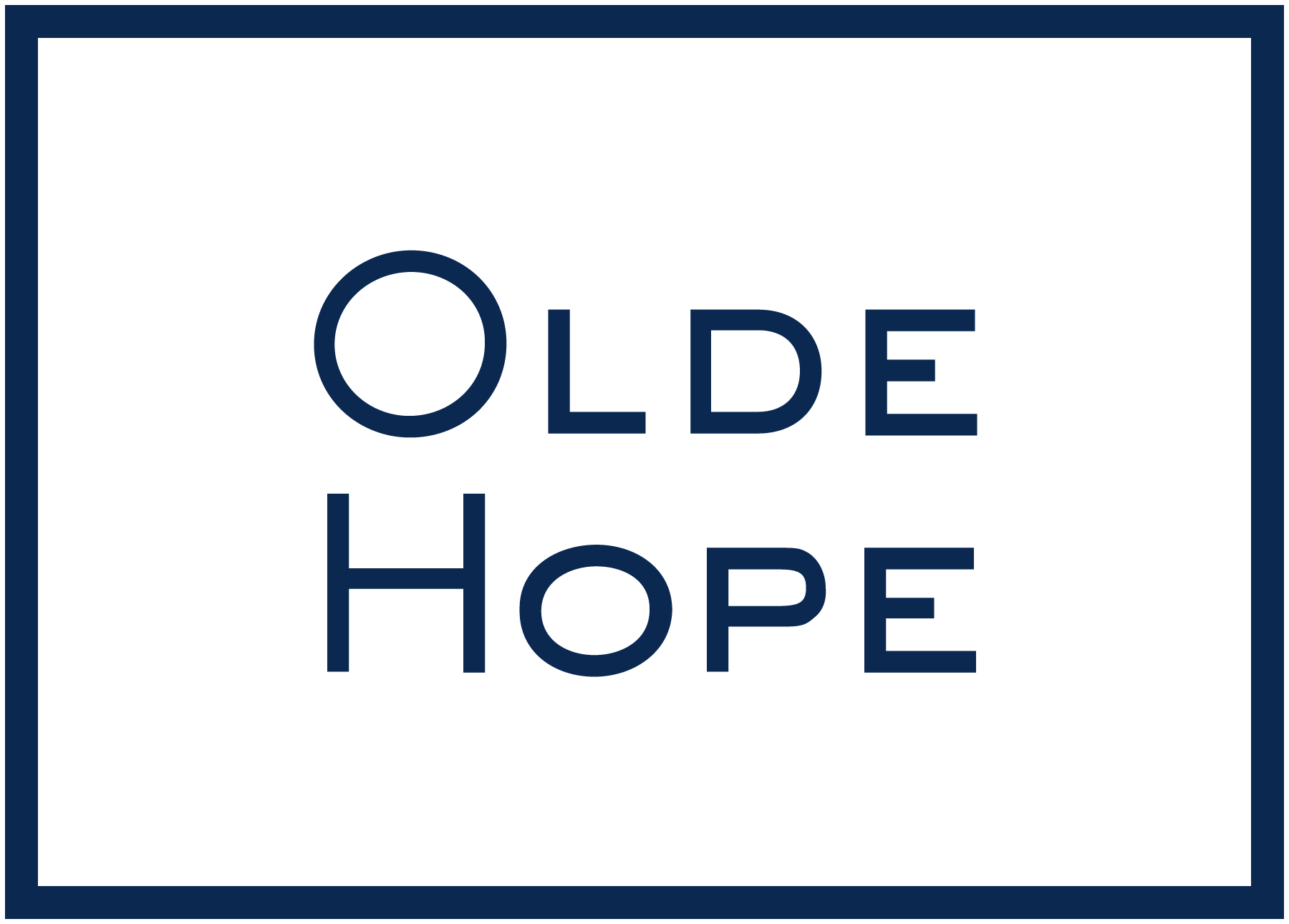The antiques business has the intrigue of a treasure hunt and the possibility of a hidden gem sits in the back of our minds as we browse flea markets, auctions, tag sales, roadside shops, and house calls. As part of our 40th anniversary we wanted to share the story of our own good fortune, of a hidden treasure discovered – and what a story it is!
In January, 1979 The Magazine Antiques published the story of the discovery which is printed here in its entirety.
And we are still looking for that next great find!
Collectors’ notes
BY KAREN M. JONES
ANTIQUES’ own forum, where readers may exchange information and advice, report discoveries and add fresh facts to the record, or set us straight when we have erred.

A long-lost portrait of Benjamin Lay
William Williams’ captivating portrait of the Quaker zealot Benjamin Lay has long been known to art historians through Henry Dawkins’ rare etched and engraved print of the subject, which is inscribed W. Williams pinx, (See ANTIQUES for May 1937, pp. 241-242.) Wilford P. Cole, in his excellent study of Dawkins’ and subsequent prints the portrait (“Henry Dawkins and the Quaker Comet,” Winterthur Portfolio 4 [Charlottesville, Virginia, 1968], pp. 34-46, cited a reference to a portrait of Lay in Benjamin Franklin’s letter to his wife, Deborah, written in London on July 10, 1758: “I wonder how you came by Ben. Lay’s Picture.” And Williams’ biographer David Howard Dickason found a reference to the painting in an 1810 list of the artist’s works which had reportedly been transcribed from Williams’ own records: “Small Portrait of Benjamin Lay for Dr. Benjamin Franklin” (William Williams, Novelist and Pointer of Colonial America [Bloomington, Indiana, 1970. p. 139). However, until recently the whereabouts of this important painting was unknown. The exciting story of its discovery by Patrick Bell and Edwin Hild Jr. is here recounted in Mr. Bell’s words: “[We] acquired the painting in August of 1977 at a local Bucks County auction. It was literally covered with dirt and sold as part of a lot of old, broken frames. Prior to the auction it had been in storage in a barn for many years along with a number of fine eighteenth-century pieces. At the time we purchased the painting, we knew it to be eighteenth-century American but were unaware of its historical significance. Our main clue in researching the oil was the inscription Benjamin Lay on the reverse of the painting. It was Winterthur that informed us of the identity of Benjamin Lay and the artist, Williams.” The painting, restored by conservators at the Henry Francis du Pont Winterthur Museum, is reproduced here along with an early impression of Dawkins’ print.
The grotesque figure in the portrait is probably a fair representation of the subject. Lay is reported to have been a hunchback. four feet seven inches tall, with a disproportionately large head. According to his biographer, Roberts Vaux (who was writing in 1815, fifty-six years after Lay’s death), his countenance was “grave and benignant.” Lay was born in Colchester, Essex, on November 26, 1681. He went to sea in 1702/3 after having served a brief apprenticeship to a glover and working for a short time on his brother’s farm. He returned to Colchester, Essex, in 1710 and married Sarah (last name unknown), also a hunchback of diminutive stature.
For the next ten years Lay was involved in political and religious controversy in London which eventually led to his being disowned by the Quaker Meeting to which he belonged. The issues he addressed during this period are not clear, but by the time he moved to Philadelphia in 1732 his objections to slavery on moral and humanitarian grounds had become the focus of his reformist activities, possibly because on the way from England he had stopped for a time in Barbados. His reputation as an agitator closely followed his arrival in Philadelphia, and he was never able to gain membership in a Meeting in America. He did, however, continue to attend Quaker services in the Philadelphia region, using the meetings to inveigh against slavery, much to the discomfiture of his slave-owning Quaker brethren. He died on February 3, 1759, leaving a rich legacy of legendary incidents associated with his crusades. He was buried in the Friends’ burial ground at Abington, near Philadelphia.
Williams has shown Lay in a setting that recalls his habits and beliefs. Vaux reported that Lay “improved a natural excavation in the earth, near a fine spring of water, so as to afford himself a commodious apartment,” where he kept nearly two hundred books. “In that seclusion he reflected, read and wrote.” Just visible in the lower left-hand corner of the painting is the spring. The open book in Lay’s right hand is inscribed Trion on Happiness, which probably represents a treatise on right living by the English Quaker philosopher Thomas Tryon. The melon, grapes, basket of fruit, and what appear to be turnips in the lower left-hand corner allude to Lay’s vegetarianism. The simple garments reflect the fact that he is reported to have worn plain clothing made from tow and linen which he wove himself.
The portrait is among the earliest known works by Williams. According to Dickason (who, of course, had seen only the print), it “incorporates motifs and devices which were to become familiar in Williams’ later works: the subject is centrally placed in the composition and is given a visual frame by a semicircular black cave mouth fringed with foliage. To the left is a receding landscape with patterned clouds above. Water—a small spring or the edge of a stream—is in the … foreground” (William Williams, p. 145).
As a rare early caricature of a legendary figure by one of America’s first portraitists, commissioned by a leading figure in American history, Williams’ portrait of Benjamin Lay is of major importance. Its reappearance some 220 years after the last known mention of its whereabouts is no less remarkable than the life of its subject.



You must be logged in to post a comment.